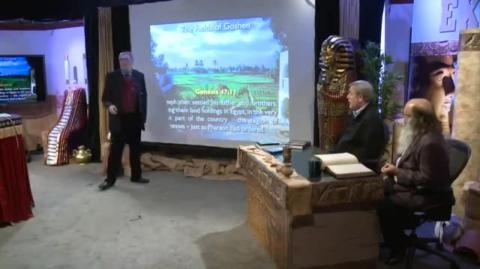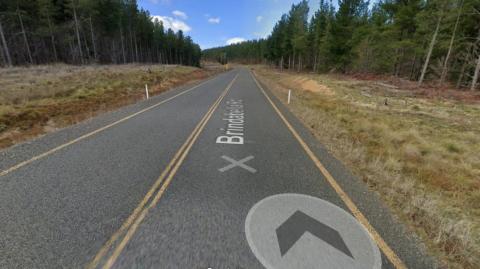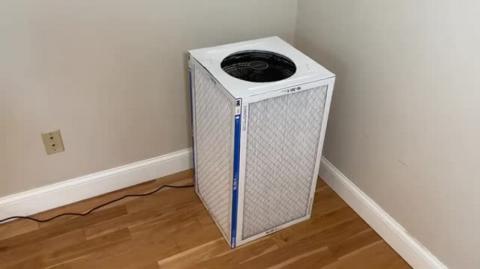Stirling Engine Generator Homemade DIY 0.47 KW ! Part 3
A lot of people have been asking about the power output of this engine so here it is!
To see other videos of the Mk2 stirling engine:
https://www.youtube.com/playli....st?list=PLgmbbzRSWDb
If you need to contact me:
shanepomeroy@hotmail.co.uk
If you want to see the power results, skip to 9:29
We've done a bit of work on the engine over the last few months,
-Stripped engine down and cleaned out oil/was residue that had built up. We are now trialling silicon oil as the lubricant which seems to allow the leather seals to slide extremely freely. This has the added benefit of being fairly inert and able to put up with high temperatures.
-Dynamometer brake built to allow us to measure the torque output. Its a little basic / crude but should allow us to get an idea of power output
-New leather lip seals have been manufactured and fitted. The originals were tight on the pistons and jammed up (the engine oil lubricant may have caused this!) These are now 3mm thick instead of 6mm. They have been soaked in neat's-foot oil for a week and lubricated with silicon oil after installing. So far really happy with these.
-Alternator was removed because it was dragging engine down to much. We might refit this again with revised gearing that better suit it.
Overview of test
For the test we have a built a fairly hot fire using welsh anthracite coal. The crank phase angle is set to roughly 100 degrees. We took a range of torque readings between 300 to 1000 RPM.
Conclusion
Maximum recorded output was 0.63 horsepower (472 watt) at 600 RPM. This way have been slightly more if we were able to disconnect the chain drive to the second shaft (needed so we could start it!). The sweet spot for power output is between 600 to 700 RPM. This is probably not to bad when you consider how inefficient this engine is with big mechanical / heat losses.
The crank phase angle was set at 100 degrees for this test. Adjusting this may have gave us slightly more power
Next steps
Now that we know the power output we can work out what to power with it. We could refit the alternator or perhaps drive something mechanical? Not sure yet? Any good ideas?
We will be running this engine at local rallies this year so will get a better idea of the reliability of this setup. We don't plan to develop this one any further because of the restrictions of the design.
We do plan to built a 3rd engine of better / simple design that is smaller but still easily built with basic tools / materials. This will probably be a project for next winter!
Specification
Piston to tube clearance cold side 3.5mm
Piston to tube clearance hot side 3.5mm
Hot bulb clearance from inner tube 3.5mm
Cold cylinder outside tube clearance from piston 3.5mm
Hot Cylinder length from bottom of regenerator to bottom of inner tube 274mm
Cold Cylinder length from bottom of regenerator to bottom of inner tube 565mm
Pistons OD 139.7mm OD
Hot bulb heat area inside (measured from bottom of regen housing) 1640 cm2
Cold jacket cold area internal (measured from bottom of regen housing) 2830 cm2
Stroke cold piston 186mm
Stroke hot piston 204.5mm
Fire grate to bottom of hot bulb 198mm
Leather seal (bottom) from bottom of regenerator 275mm
Regenerator height (flow area) 55mm
Regenerator length 216mm
Regenerator width 100mm
Displacement 11.4 litres
0



 Life_N_Times_of_Shane_T_Hanson
Life_N_Times_of_Shane_T_Hanson
 Billy Von Bomb
Billy Von Bomb
 X22 Report
X22 Report

 profhugodegaris
profhugodegaris

 Richie From Boston
Richie From Boston
 WMHarrison94
WMHarrison94



 NerokeFive
NerokeFive










Log in to comment
Sure it's a bit old school, but it's still pretty cool even though it's a bit unbalanced.
It's not a bad idea... but using a working fluid like naptha (Shellite) has a boiling point of ~40*C and at 80*C it produces a pressure of 30 PSI.....
These people who keep on using 5000 W of heat to generate 500 W of crankshft power...
Or "real steam" engines - with dry steam at 400 - 450*C...
Naptha is the working fluid used in Geothermal Power Stations......
And the Stirling Cycle engines - are not that brilliant.... The heat gain and heat loss from the working fluid is not split... in a common circuit.
The most common engineering flaw is in the thinking that "We must produce incredibly small, incredibly powerful generation systems, with massive amounts of energy input to get massive amounts of energy output" - when a low spec, low speed, low power generation system will work just fine and for generations....
now just imagine one of these in a more modern setup that runs smother and quiet and instead of being fed wood, you just used your natural gas in your house, like let's use an example of your hot water heater pilot light providing the heat, you could potentially generate power for your house during a power outage, but you might also be able to provide enough power to run your house on a system of sterling engines with pilot lights providing the power without the grid power while only paying your gas company.
or if you made your own fuel, i just think these things are so cool.
this one actually reminds me of the old steam engines used in trains back in the 1800s, but you got to admit, it's still pretty badass.
i also thought i could make a miniature version to make use of the waste heat from my PC, so it's not really waste heat at that point.